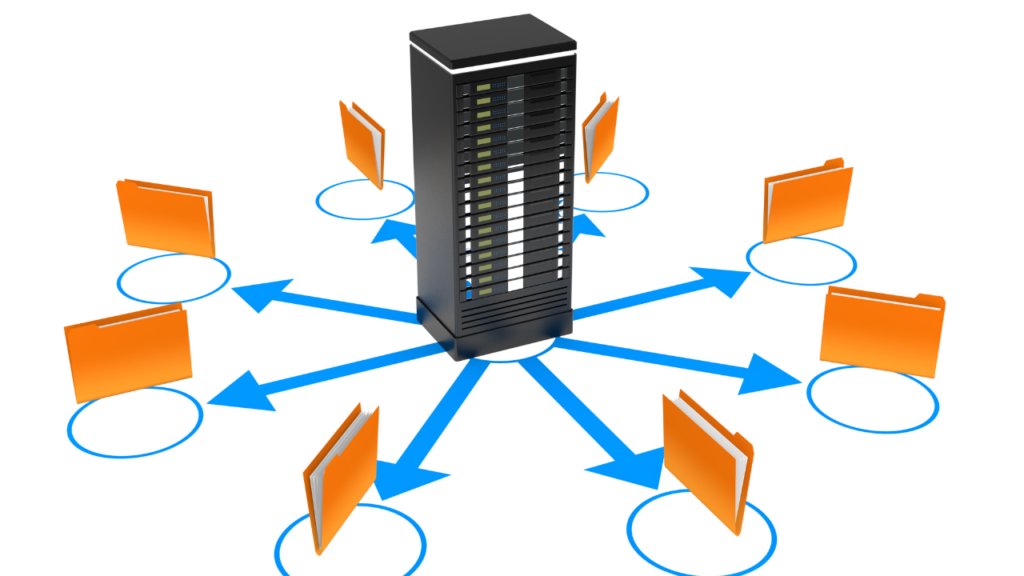Working from home has become a new norm for many people, and efficient file sharing is essential for remote teams. However, underserved groups face unique challenges in remote collaboration. In this article, we will explore 10 ways to share files with your team while working from home, focusing on addressing the needs of underserved communities.
Table of Contents
ToggleWhy efficient file sharing matters for remote teams
In a remote work environment, file sharing is crucial for collaboration and productivity. Sharing files quickly and easily allows team members to collaborate on projects, share information, and meet deadlines. Efficient file sharing can make or break a remote team’s success.
Challenges Faced by underserved groups in remote collaboration
Remote collaboration is not always easy for everyone, especially for underserved groups such as people with disabilities, limited access to technology, or low bandwidth or data limits. These groups may face additional barriers in sharing files and participating in remote work. Addressing these challenges and finding solutions that work for everyone is crucial.

10 Ways to share files with your team while working from home
Cloud based file sharing platforms
Cloud-based file-sharing platforms are a popular option for remote teams. These platforms allow users to store and share files in the cloud, making it easy to collaborate on projects from anywhere.
Overview of popular cloud storage and collaboration tools
Some popular cloud-based file-sharing platforms include Google Drive, Dropbox, OneDrive, and Box. These tools offer a variety of features, including real-time collaboration, version control, and integration with other apps.
Considerations for selecting a platform that meets underserved needs
When selecting a cloud-based file-sharing platform, it is essential to consider the needs of underserved groups; This may include factors such as accessibility for people with disabilities, data privacy and security, and compatibility with different devices and internet speeds.
Examples of platforms with strong accessibility and privacy features
Some cloud-based file-sharing platforms prioritizing accessibility and privacy include pCloud, Tresorit, and Nextcloud. These platforms offer end-to-end encryption, accessibility options for people with disabilities, and data storage and sharing control. It is essential to do your research and choose a platform that meets your team’s specific needs.
Peer to Peer file sharing programs
Peer-to-peer (P2P) file sharing is a decentralized method of file sharing in which files are distributed across a network of computers. This method of file sharing can offer advantages for some remote teams.
Explanation of peer-to-peer file sharing and its advantages for some groups
P2P file sharing can be advantageous for remote teams with limited internet bandwidth or slow connections because it can reduce the load on a central server. P2P can also be a more affordable option than cloud-based platforms, as there are no fees for using a central server. Additionally, P2P file sharing can be a more private option because files are not stored on a central server.
Discussion of concerns around security and legality:
There are concerns about the security and legitimacy of P2P file sharing because it can be used for illegal purposes, such as sharing copyrighted material without permission. Additionally, P2P networks can be vulnerable to security threats such as malware and hacking.
Recommendations for secure and accessible P2P tools
To ensure secure and accessible P2P file sharing, it is important to use reputable and trustworthy P2P tools with solid security features such as encryption and anti-malware protection. Examples of P2P tools that prioritize security and accessibility include Resilio Sync, Syncthing, and BitTorrent Sync. It is also important to ensure that all team members are using the same P2P tool and to establish clear guidelines for file sharing to ensure legal and ethical practices are followed.

Email Attachments and FTP Servers
Email attachments and FTP servers are traditional file-sharing methods used for decades. While they may not be as popular as cloud-based file-sharing platforms, they still have their place in remote collaboration.
Overview of traditional file-sharing methods and their limitations
Email attachments involve sending files directly via email. FTP (File Transfer Protocol) servers allow users to upload and download files using FTP software. While these methods are familiar and easy to use, they have several limitations. Email attachments have file size limits, which can make it difficult to share large files. FTP servers require technical knowledge and may need to be more secure than other options.
Considerations for optimizing email attachments and FTP servers for underserved groups
Email attachments and FTP servers may be a better option for underserved groups than cloud-based platforms due to limited internet access or lower device capabilities. To optimize these methods, it is essential to consider factors such as file size, security, and compatibility. It may also be helpful to explore alternative email clients or FTP software that offer more accessibility options.
Tips for minimizing data usage and ensuring compatibility
To minimize data usage when using email attachments, it is essential to compress files before sending them; This can be done using compression software such as WinZip or 7-Zip. Ensuring compatibility using standard file formats such as PDFs or JPEGs is also important. For FTP servers, using secure connections (e.g., SFTP) and limiting access to only authorized users is crucial. It is also helpful to choose FTP software that is accessible and user-friendly.

Mobile File-Sharing Apps
Mobile file-sharing apps are designed for smartphones and tablets, making them a convenient option for remote teams sharing files on the go.
Introduction to file-sharing apps designed for mobile devices
File-sharing apps for mobile devices offer real-time collaboration, document scanning, and integration with cloud-based storage platforms. These apps can be handy for remote teams who need to access and share files from their mobile devices.
Features that are particularly useful for underserved communities
For underserved communities, mobile file-sharing apps can be a more accessible option than traditional desktop software. Features such as voice-to-text dictation and text-to-speech conversion can be helpful for people with disabilities. Apps that work well on low-bandwidth or limited-data connections can benefit those with limited internet access. It is also important to consider data privacy and security features to protect sensitive information.
Examples of mobile file-sharing apps with solid privacy and accessibility features
Some examples of mobile file-sharing apps prioritizing privacy and accessibility include Signal, Telegram, and Jami. These apps offer end-to-end encryption, accessibility options for people with disabilities, and data storage and sharing control. Some cloud-based file-sharing platforms, such as Google Drive and Dropbox, also have mobile apps that offer similar features. It is important to research and choose an app that meets your team’s specific needs.
Hybrid Approaches
Hybrid approaches involve combining different file-sharing tools to create a customized solution that meets the specific needs of a remote team.
Description of hybrid approaches that combine different file-sharing tools
Hybrid approaches can involve multiple cloud-based file-sharing platforms like Google Drive and Dropbox. They can also include using a combination of cloud-based platforms and traditional file-sharing methods such as email attachments or FTP servers. These approaches allow teams to take advantage of the strengths of each tool while minimizing the drawbacks.
Benefits and drawbacks of using multiple tools simultaneously
The benefits of using a hybrid approach include increased flexibility, customization, and accessibility. By combining different tools, teams can create a solution that meets their needs. However, using multiple tools can lead to complexity, increased data fragmentation, and potential security risks if not managed properly.
Case studies of underserved groups that have found success with hybrid approaches
Underserved groups can benefit from hybrid approaches by combining tools that are more accessible or more affordable for their specific needs. For example, a team with limited internet access might use email attachments or FTP servers to share files while using a cloud-based real-time collaboration platform. In another example, a team with limited financial resources might use a combination of free and paid cloud-based platforms to create a customized solution. Case studies of organizations successfully implementing hybrid approaches can provide valuable insights for remote teams facing similar challenges.
Virtual Private Networks (VPNs)
Explanation of Virtual Private Networks and their benefits for file sharing
A Virtual Private Network (VPN) allows you to create a secure connection to another network over the Internet. VPNs can securely share files with remote teams by creating a secure, encrypted connection between devices. This connection can protect the files being transferred from potential interception or data theft. VPNs can also help bypass geographical restrictions or access files on a remote network.
Considerations for selecting a VPN that meets underserved needs
When choosing a VPN that meets underserved needs, consider the following factors:
- Security and privacy features: Ensure the VPN provider has strong encryption, a no-logs policy, and other security features to protect sensitive data.
- Accessibility: Ensure the VPN is easy to use and compatible with all necessary devices and operating systems.
- Affordability: Consider the cost of the VPN and whether it fits within your budget.
Examples of VPNs with solid security and accessibility features
- NordVPN: Offers strong encryption, a no-logs policy, and a wide range of servers in different locations. Compatible with multiple devices and operating systems.
- ExpressVPN: Offers strong encryption, a kill switch, and a no-logs policy. Easy to use and compatible with various devices and operating systems.
- ProtonVPN: Offers strong encryption, no-logs policy, and secure core servers. It has a free version and is compatible with multiple devices and operating systems.

File transfer protocols (FTPs)
Explanation of File Transfer Protocols and their benefits for file sharing
File Transfer Protocol (FTP) is a standard network protocol that transfers files from one host to another over the Internet. FTP can transfer large files quickly and efficiently between team members. It provides a secure way to transfer files. You can set up access permissions to ensure that only authorized users can access the files.
Considerations for selecting an FTP that meets underserved needs
When choosing an FTP that meets underserved needs, consider the following factors:
- Security: Look for FTP providers that offer secure connections, encryption, and other security features to protect sensitive data.
- Accessibility: Choose an FTP provider that is easy to use and compatible with all necessary devices and operating systems.
- Cost: Consider the cost of the FTP service and whether it fits within your budget.
Examples of FTPs with solid security and accessibility features
- FileZilla: A free, open-source FTP client with solid security features such as encryption and secure connections. Compatible with multiple devices and operating systems.
- Cyberduck: A paid FTP client offering strong encryption, multiple protocols support, and an easy-to-use interface. Compatible with various devices and operating systems.
- Box: A cloud-based FTP solution that offers strong encryption, access controls, and an easy-to-use interface. Compatible with multiple devices and operating systems.
Collaboration tools with built-in file sharing
Overview of popular collaboration tools with built-in file sharing:
Collaboration tools with built-in file sharing allow team members to share files and collaborate on projects in real time. These tools often include commenting and version control features, making it easier to manage and track changes to shared files. Examples of popular collaboration tools with built-in file sharing include Google Drive, Microsoft Teams, and Slack.
Considerations for selecting a collaboration tool that meets underserved needs
When selecting a collaboration tool that meets underserved needs, consider the following factors:
- Accessibility: Choose a tool that is easy to use and compatible with all necessary devices and operating systems.
- Security: Look for collaboration tools with solid security features like encryption and access controls to protect sensitive data.
- Cost: Consider the cost of the collaboration tool and whether it fits within your budget.
- Customization: Look for collaboration tools that allow for customization to meet specific needs and preferences.
Examples of collaboration tools with strong accessibility and privacy features
- Google Drive: A cloud-based collaboration tool that allows team members to create, edit, and share documents, spreadsheets, and presentations in real time. It offers strong access controls and encryption to protect sensitive data. Compatible with multiple devices and operating systems.
- Microsoft Teams: A collaboration tool that includes file sharing, video conferencing, and chat features. It offers powerful security features such as encryption and access controls to protect sensitive data. Compatible with multiple devices and operating systems.
- Slack is a collaboration tool that features file sharing, messaging, and video conferencing. It offers strong encryption and access controls to protect sensitive data. Compatible with multiple devices and operating systems.
USB drives and physical media
Explanation of using physical media to share files
Physical media such as USB or external hard drives can share files between team members. This method is useful when an internet connection is not available or when there are concerns about the security of online file sharing.
Benefits and drawbacks of using USB drives and physical media
The benefits of using USB drives and physical media for file sharing include:
- No need for an internet connection
- It can be more secure than online file sharing if physical media is encrypted and kept secure
- It can be faster than online file sharing for large files
The drawbacks of using USB drives and physical media for file sharing include:
- Risk of loss or damage to the physical media
- Limited storage capacity of physical media
- Limited access to files on physical media for team members who are not physically present
Tips for ensuring security and accessibility when using physical media
To ensure the security and accessibility of files shared through physical media, consider the following tips:
- Encrypt the files stored on the physical media to prevent unauthorized access.
- Keep the physical media in a secure location when not in use.
- Make backup copies of the files to prevent loss or damage.
- Label the physical media clearly to make it easy to identify and organize.
- Ensure compatibility with the devices team members will use to access the files.
Remote desktop software
Explanation of remote desktop software and its benefits for file sharing
The remote desktop software allows team members to access files and applications on a remote computer from their own devices. This method is helpful for teams with limited access to specific software or hardware.
Considerations for selecting remote desktop software that meets underserved needs
When selecting remote desktop software for underserved groups, consider the following factors:
- Accessibility: Does the software have accessibility features that meet the needs of all team members, including those with disabilities?
- Security: Does the software use strong encryption to protect data during remote connections?
- Compatibility: Does the software work with the operating systems and devices team members will use?
- Ease of use: Is the software easy to use and understand, particularly for team members with limited technical expertise?
- Cost: Is the software affordable for the organization and its team members?
Examples of remote desktop software with solid security and accessibility features
Examples of remote desktop software with solid security and accessibility features include:
- TeamViewer: This software offers end-to-end encryption and accessibility features such as screen reader support and high-contrast mode.
- LogMeIn: This software offers multi-factor authentication and compatibility with various devices and operating systems.
- AnyDesk: This software offers high-speed connections and compatibility with low-bandwidth connections, making it a good option for teams with limited internet access.
- Microsoft Remote Desktop: This software integrates with Microsoft products and accessibility features such as screen magnification and voice control.
Conclusion
Recap of the ten options for file sharing with remote teams:
- Cloud-based file-sharing platforms
- Peer-to-peer file sharing
- Email attachments and FTP servers
- Mobile file-sharing apps
- Hybrid approaches
- Virtual Private Networks (VPNs)
- File Transfer Protocols (FTPs)
- Collaboration tools with built-in file sharing
- USB drives and physical media
- Remote desktop software
Final thoughts on choosing the right tool for underserved needs
Underserved groups face unique challenges regarding remote collaboration, and choosing the right file-sharing tool to meet their needs is essential. When selecting a tool, consider accessibility, security, compatibility, ease of use, and cost. It’s also important to stay informed about the latest tools and best practices for remote collaboration.
Call to action for prioritizing accessibility and privacy in remote collaboration.
As remote work becomes more prevalent, it’s critical to prioritize accessibility and privacy for all team members. Organizations can ensure that everyone can participate fully and securely in remote teamwork by choosing file-sharing tools that meet underserved needs and implementing best practices for remote collaboration. Let’s work together to make remote collaboration accessible and inclusive for all.











